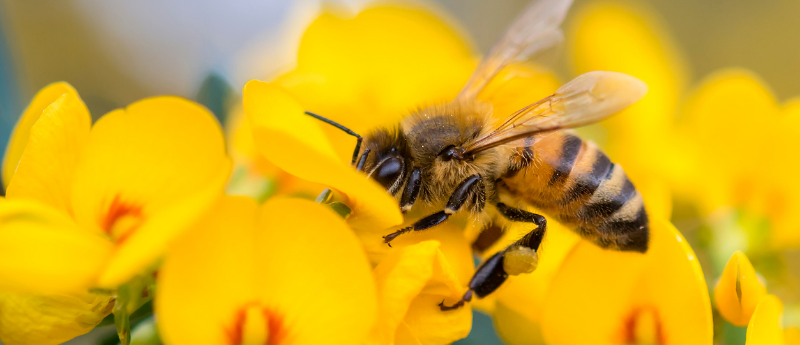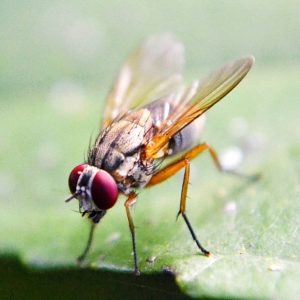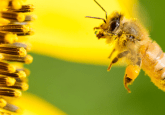The bee-saving antidote to pesticides

A new antidote has been developed to reduce the damage done to the bee population by pesticides.
Pesticides are used on crops and plants all over the world to prevent destruction by insects; however, these toxic substances can be passed on to other insects such as bees, devasting the population. A new technology has recently been developed by Cornell University (NY, USA) that provides an antidote to these deadly pesticides.
An average of six pesticides are found in pollen and wax in 98% of beehives in the USA, leading to the death of wild bees and a third of those looked after by beekeepers annually. Not only is the reduction of bee populations very upsetting in itself, but as pollinators they are integral in maintaining the natural environment and in fertilizing crops for human consumption.
The technology detoxifies organophosphates – a common insecticide component – that poison bees and lower their natural immunity to other pathogens including varroa mites. The technology has been described in Nature Food, where the researchers explain how the delivery method of the antidote has been further adapted to protect bees from all insecticides.
“We have a solution whereby beekeepers can feed their bees our microparticle products in pollen patties or in a sugar syrup, and it allows them to detoxify the hive of any pesticides that they might find,” explained James Webb, a co-author of the paper and CEO of Beemmunity (NY, USA), a new business started up to address the issue.
A pollen-sized microparticle was manufactured, containing enzymes with the ability to neutralize the organophosphate insecticides before they can cause harm to the bee. The particle is covered in a protective coating, which means that it is not broken down by the acids in the bee’s crop (stomach).
Virtual reality: enabling new kinds of animal studies
Animals are sensitive to their own movement, especially if you want to study things like special awareness or how an animal knows where it is. It is important that an animal not only has the visual appearance of being in a certain location but also has all of that sensory feedback.
The microparticles are administered by mixing with pollen or sugar water, which the bees can then ingest. The microparticles travel to the midgut where the enzymes are activated to neutralize the organophosphates.
The researchers carried out a series of in vitro experiments, followed by tests on live bees in a laboratory environment. They used a common organophosphate-based pesticide – malathion – in pollen and fed this to the bees, along with the enzyme-containing microparticles. A control group was used to compare; they were fed the contaminated pollen without the detoxifying microparticles.
The bees administered the microparticles containing a high dose of the detoxifying enzyme survived, whereas the bees in the control group all died after a few days.
The researchers working with Beemmunity have built upon this technology to design microparticles with a shell made up of insect proteins and filled with an absorptive oil, as opposed to the enzymes, to give the particle sponge-like properties. Numerous insecticides are specially designed to target insect proteins, therefore the new shell casing attracts the insecticide and draws it in where it remains inert until defecated by the bee without causing harm.
The team is hoping to trial the technology in colonies, including 240 hives to see how successful it will be in reducing the risks posed to bees.
“This is a low-cost, scalable solution which we hope will be a first step to address the insecticide toxicity issue and contribute to the protection of managed pollinators,” concluded Senior Author Minglin Ma (Cornell University).






